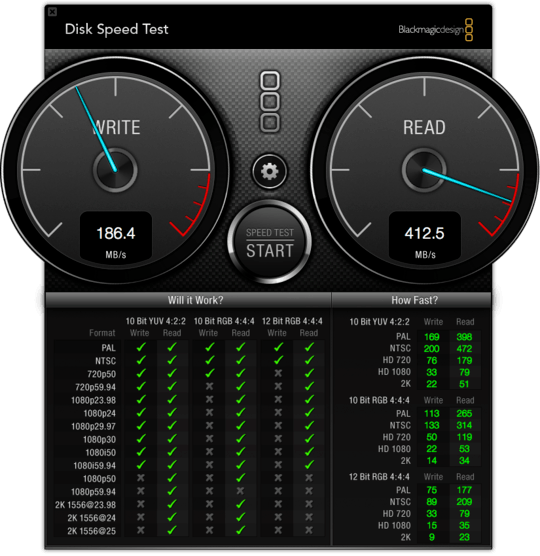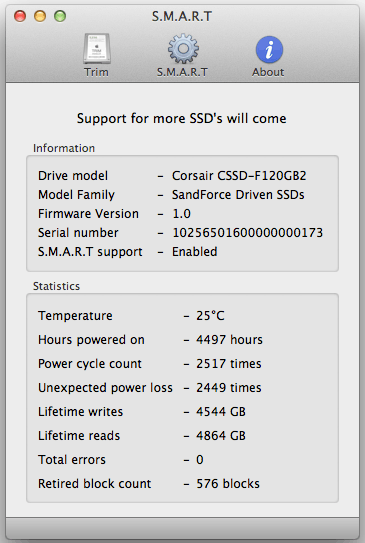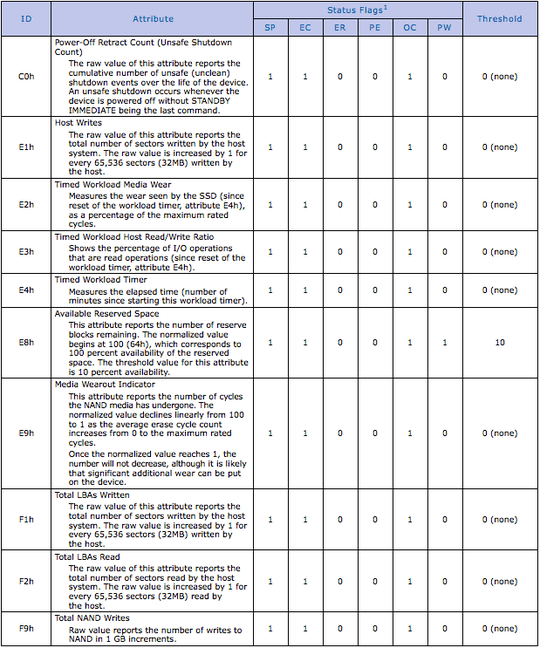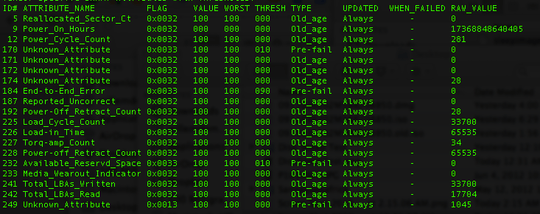11
1
I recently installed a new Intel 520 series 180GB SSD in my brand new MacBook Pro.
The system is as follows:
Model: MacBook Pro 15-inch, Late 2011 (MacBookPro8,2)
Processor: 2.4 GHz Intel Core i7
Memory: 16 GB 1333 MHz DDR3
Graphics: AMD Radeon HD 6770M 1024 MB
Software: Mac OS X Lion 10.7.3
Main Drive Bay: Intel 520-series 180GB SATA-3 (6GB/s negotiated link) SSD (Firmware: 400i) [80GB free]
Optical Bay: Toshiba 5400 RPM 750GB SATA-2 HDD
Trim: Enabled (according to Trim Enabler App)
And here are the speeds I'm getting:

Read: 412 MB/s
Write: 186 MB/s
What have I done wrong?
Ok, so I was informed in an answer that this could be because the test uses compressed data which will not allow the Intel 520 series SandForce controller to reach it's high write levels to to its architecture.
Here's another test (don't know if it uses compressed data or not):

It's better, but still not what I'm looking for. By the way, what's up with 32MB/s for 4k read operations?
Results expected:
Read/write both > 500MB/s
I have seen benchmarks with lesser SSD:s (SATA-2 even) outperform my write-speeds by far. Also, Intel 520 SSD:s are supposed to be the top class of SSD:s.
Trim Enabler report:

This looks a bit odd compared to screenshots from their site:

These is the defined S.M.A.R.T attributes (taken from Intel):

And here are my S.M.A.R.T attributes read using smartctl tool from smartmontools:

They don't seem very compatible. I'm going to try and look for a S.M.A.R.T attributes reader tool for OS X which might support Intel 520 series.
EDIT:
I've solved my problem by buying a MacBook Pro Retina which uses a PCIe2-2x SSD. Benchmarks below:

What results you expected? What does the spec say? Does it say
up to ...? – Robert Niestroj – 2012-06-07T23:24:57.103Updated to show expected results. – Willem – 2012-06-07T23:29:59.563
Were all of the other results based on the same benchmark? Block size and sequential vs. random will make a difference. – rob – 2012-06-07T23:34:12.867
Yes, they were done using the same application test. – Willem – 2012-06-07T23:44:43.477
Windows user here, my Intel 520 180GB SSD works great with Windows 8. Maybe you need a more modern operating system? – ta.speot.is – 2012-06-08T01:16:35.853
@ta.speed.is Mac OS X Lion is very modern. You gave me the idea to try a speed test on my Windows 7 partition though. WHat speeds are you getting with your Intel 520 180GB SSD in Windows 8? – Willem – 2012-06-08T07:56:07.433